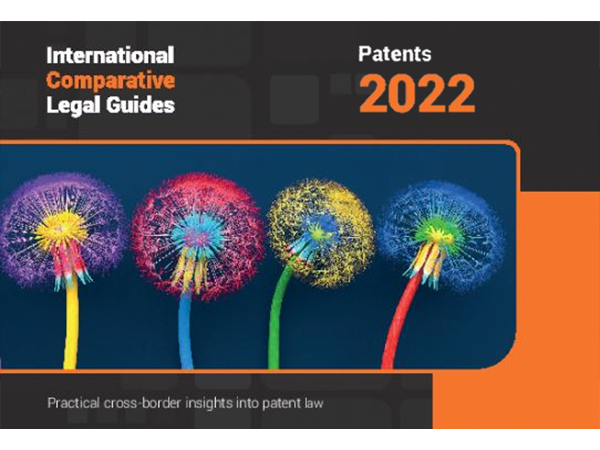
Intellectual Property
Viewpoints
Filter by:
Federal Circuit Evaluates Import of Factual Statements Made During BPCIA Pre-litigation Patent Dance
November 17, 2017 | Blog | By Thomas Wintner, Joe Rutkowski
In a nonprecedential opinion issued on November 13, 2017, the United States Court of Appeals for the Federal Circuit affirmed a district court finding that Apotex’s aBLAs for biosimilar versions of Neulasta® and Neupogen® did not infringe an Amgen protein folding patent.
Read more
District Court Denies Motion to Stay Pending Supreme Court Decision in Oil States
November 17, 2017 | Blog | By Andrew DeVoogd
In June, we covered the Supreme Court’s grant of certiorari in Oil States Energy Servs., LLC v. Greene's Energy Grp., LLC, 137 S. Ct. 2239 (2017). The Court will decide whether inter partes review – an adversarial process used by the Patent and Trademark Office (PTO) since September 16, 2012 to analyze the validity of existing patents – violates the Constitution by extinguishing private property rights through a non-Article III forum without a jury.
Read more
Federal Circuit Affirms Delaware Alice Decision
November 16, 2017 | Blog | By Michael Renaud, Brad M Scheller
In issuing its precedential decision earlier this month in Two-Way Media v. Comcast, the Federal Circuit affirmed a Delaware district court determination that four data streaming patents were directed to ineligible subject matter pursuant to § 101 and the Alice framework.
Read more
Federal Circuit Concludes that TC Heartland Was a Change in the Law, Reviving Venue Transfer Motions for Defendants Previously Held to Have Waived the Argument
November 16, 2017 | Blog | By Andrew DeVoogd, Anthony Faillaci
On November 15, 2017, the United States Court of Appeals for the Federal Circuit resolved a split among district courts on the question whether the United States Supreme Court’s TC Heartland decision constituted a change in the law, or merely a course-correction to honor preexisting law.
Read more
USPTO Publishes New Rule Governing Privilege for Patent Attorneys and Agents
November 14, 2017 | Blog | By Matthew Hurley, Matthew Galica, Anthony Faillaci
Earlier this week, the United States Patent and Trademark Office (“USPTO”) published a new rule governing when privilege exists for communications between clients and their domestic or foreign patent attorneys and patent agents before the Patent Trial and Appeal Board (“PTAB”).
Read more
Yahoo Asks Federal Circuit to Determine Whether TC Heartland Changed, or Merely Clarified, Venue Rules
November 10, 2017 | Blog | By Andrew DeVoogd, Anthony Faillaci
In an interesting development in the post-TC Heartland world, it appears that the Federal Circuit will soon answer the question whether the Supreme Court’s venue decision was a change in the law, or merely a course-correction to honor preexisting law.
Read more
Potential Future Harm to Patent Holder Found to Justify Imposition of Preliminary Injunction
November 8, 2017 | Blog | By Andrew DeVoogd, Nick Armington
In Vecco Instruments Inc. v. SGL Carbon, LLC, No. 17-CV-2217 (E.D.N.Y. Nov. 2, 2017), Judge Pamela Chen in the Eastern District of New York recently granted Vecco’s motion for a preliminary injunction enjoining SGL Carbon.
Read more
Expediting Patent Prosecution with the New Expanded Collaborative Search Pilot Program
November 6, 2017 | Blog | By Christina Sperry
On November 1, 2017 the U.S. Patent and Trademark Office (USPTO) implemented an expansion of the Collaborative Search Pilot Program (CSP), which began in 2015 and ended earlier in 2017, to expedite prosecution of related applications at the USPTO and the Japanese Patent Office (JPO) or Korean Intellectual Property Office (KIPO).
Read more
Apple and Samsung Are Headed Back to the Court Room
October 25, 2017 | Blog | By Andrew DeVoogd, Serge Subach
Following a lengthy and extensive litigation that began in 2011 that culminated in a U.S. Supreme Court decision in December of 2016, smartphone industry titans Apple and Samsung will again find themselves in Federal District Court Judge Lucy Koh’s courtroom on remand to determine appropriate damages for Samsung’s infringement of Apple’s design patents.
Read more
Federal Circuit Clarifies the Requirements for a Teaching Away by the Prior Art
October 23, 2017 | Blog | By Adam Samansky, Peter Cuomo, Joe Rutkowski
In a precedential opinion issued on October 11, 2017, the United States Court of Appeals for the Federal Circuit reversed the Patent Trial and Appeals Board’s (“PTAB”) finding of non-obviousness where the prior art taught away from some, but not all, of the embodiments covered by the challenged claims.
Read more
Chief Judge Stark Rejects Motion for Enhanced Damages Award Due to the Public Interest in the Accused Hepatitis C Virus Treatments
October 12, 2017 | Blog | By Andrew DeVoogd, Courtney Herndon
Last month, following a jury verdict in federal district court in Delaware awarding Plaintiff Idenix Pharmaceuticals LLC $2.54 billion in damages—“the largest damages verdict ever returned in a patent [infringement] trial”—Chief Judge Leonard Stark denied Idenix’s motion for enhanced damages.
Read more
General Plastic Industrial Co. v. Canon Kabushiki Kaisha: PTAB Explains Factors for Follow-On Petitions
October 9, 2017 | Blog | By Brad M Scheller, Peter Cuomo, Inna Dahlin
On September 6, 2017, an expanded panel of the Patent Trial and Appeal Board issued an “informative” decision in General Plastic Industrial Co., Ltd, v. Canon Kabushiki Kaisha setting forth the Board’s framework for analyzing follow-on inter partes review (IPR) petitions.
Read more
Canada Institutes Certificates of Supplementary Protection for Approved Drug Products
October 6, 2017 | Blog | By Alex Trimble, PhD
On September 21, 2017, the Comprehensive Economic and Trade Agreement (CETA) signed between the European Union (EU) and Canada provisionally entered into force in Canada.
Read more
ALJ Shaw: ITC is a Viable Forum for Enforcement of SEPs
October 6, 2017 | Blog | By Michael Renaud, James Wodarski, Robert Moore
The public version of ALJ Shaw’s Initial Determination (ID) in U.S. International Trade Commission (ITC) investigation Certain Magnetic Data Storage Tapes and Cartridges Containing the Same, Inv. No. 337-TA-1012 (1012 Investigation), provides important guidance on enforcement of standard-essential patents (SEPs) in the ITC.
Read more
AQUA PRODUCTS: The Federal Circuit Shifts The Burden of Proof On Amending Claims During An IPR From The Patent Owner To The Petitioner
October 5, 2017 | Blog | By Michael Renaud, William Meunier, Michael Newman, Matthew Galica
The United States Court of Appeals for the Federal Circuit’s recent decision in Aqua Products Inc., v. Matal materially changes the burden of proof associated with the patentability of amended claims during an inter partes review (“IPR”), shifting the burden from the Patent Owner seeking the amendment to the IPR Petitioner opposing it.
Read more
Making the Sausage: Lower Courts Grapple with the Supreme Court’s TC Heartland Venue Decision
September 29, 2017 | Advisory | By Andrew DeVoogd, Anthony Faillaci, Daniel Weinger
The United States Supreme Court decided earlier this year that a 1957 opinion is still valid and still limits venue choices for patent infringement actions under 28 U.S.C. § 1400. See TC Heartland LLC v. Kraft Foods Group Brands LLC, 581 U.S. ___ (2017) (citing Fourco Glass Co. v. Transmirra Products Corp., 353 U.S. 222, 226 (1957)).
Read more
Recap on Design Patent Drawings
September 29, 2017 | Blog | By Christina Sperry, Inna Dahlin
This post is a follow-up to our prior post To Seek Design Protection or Not, That is the Question! where we discuss situations where it is worth considering seeking a design patent. Here we highlight takeaways from a USPTO Inventor Info Webinar (the “Webinar”) held on September 21, 2017, that focused on design patent drawing requirements, as well as on other issues on design patents.
Read more
Making the Sausage: Lower Courts Grapple With the Supreme Court’s TC Heartland Venue Decision
September 27, 2017 | Blog | By Andrew DeVoogd, Anthony Faillaci
The United States Supreme Court decided earlier this year that a 1957 opinion is still valid and still limits venue choices for patent infringement actions under 28 U.S.C. § 1400.
Read more
“In Light of the Specification”: Federal Circuit Weighs in on the Broadest Reasonable Interpretation
September 27, 2017 | Blog | By Brad M Scheller
The Federal Circuit yesterday issued an opinion in In re: Smith Int’l, Inc., No. 2016-2303 (Fed. Cir. Sept. 26, 2017) reversing an affirmance by the Patent Trial and Appeal Board of the rejection of several claims of U.S. Patent No. 6,732,817 being challenged in ex parte reexamination.
Read more
Building a Health App? Part Two: Protecting Your Intellectual Property
September 26, 2017 | Blog | By Christina Sperry
This post is the second in a series of weekly blog posts covering legal issues for consideration during the early stages of development of a health app and providing best practices to help guide you through a successful launch.
Read more
Explore Other Viewpoints:
- Data Centers & Digital Infrastructure
- AI: The Washington Report
- Antitrust and Federal Regulation
- Appellate
- Arbitration, Mediation & Alternate Dispute Resolution
- Artificial Intelligence
- Awards
- Bankruptcy & Restructuring
- California Land Use
- Cannabis
- Class Action
- Complex Commercial Litigation
- Construction
- Consumer Product Safety
- Corporate Governance (ESG)
- Cross-Border Asset Recovery
- DEI Legal Developments
- Debt Financing
- Direct Investing (M&A)
- Diversity
- EB-5 Financing
- Education & Nonprofits
- Employment
- EnforceMintz
- Environmental (ESG)
- Environmental Enforcement Defense
- Environmental Law
- Environmental, Social, and Corporate Governance (ESG)
- FDA Regulatory
- False Claims Act
- Federal Circuit Appeals
- Financial Institution Litigation
- Government Law
- Growth Equity
- Health Care
- Health Care Compliance, Fraud and Abuse, & Regulatory Counseling
- Health Care Enforcement & Investigations
- Health Care Transactions
- Health Information Privacy & Security
- IP Due Diligence
- IPRs & Other Post Grant Proceedings
- Immigration
- Impacts of a New US Administration
- Insolvency & Creditor Rights Litigation
- Institutional Investor Class Action Recovery
- Insurance & Financial Services
- Insurance Consulting & Risk Management
- Insurance and Reinsurance Problem-Solving & Dispute Resolution
- Intellectual Property
- Investment Funds
- Israel
- Licensing & Technology Transactions
- Life Sciences
- Litigation & Investigations
- M&A Litigation
- ML Strategies
- Managed Care
- Medicare, Medicaid and Commercial Coverage & Reimbursement
- Mergers & Acquisitions
- Patent Litigation
- Patent Prosecution & Strategic Counseling
- Pharmacy Benefits and PBM Contracting
- Portfolio Companies
- Privacy & Cybersecurity
- Private Client
- Private Equity
- Pro Bono
- Probate & Fiduciary Litigation
- Products Liability & Complex Tort
- Projects & Infrastructure
- Public Finance
- Real Estate Litigation
- Real Estate Transactions
- Real Estate, Construction & Infrastructure
- Retail & Consumer Products
- Securities & Capital Markets
- Securities Litigation
- Social (ESG)
- Special Purpose Acquisition Company (SPACs)
- Sports & Entertainment
- State Attorneys General
- Strategic IP Monetization & Licensing
- Sustainable Energy & Infrastructure
- Tax
- Technology
- Technology, Communications & Media
- Technology, Communications & Media Litigation
- Trade Secrets
- Trademark & Copyright
- Trademark Litigation
- Unified Patent Court (UPC)
- Value-Based Care
- Venture Capital & Emerging Companies
- White Collar Defense & Government Investigations
- Women's Health and Technology



